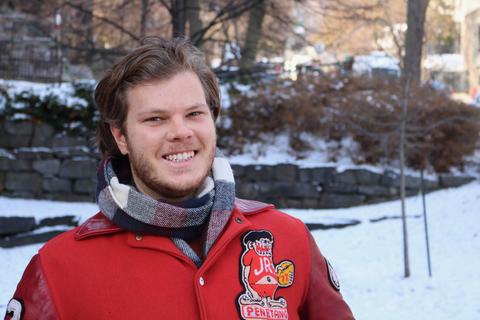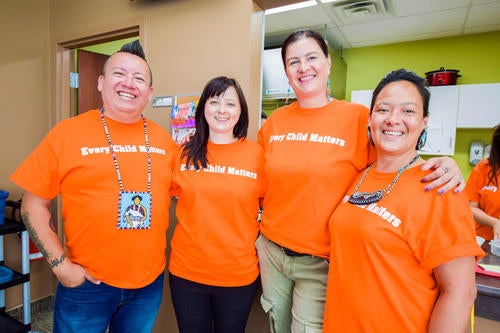On the evening of February 9th, people across Canada held their breath as an all-white jury delivered a not-guilty verdict in the case of farmer Gerald Stanley. Stanley was facing second-degree murder charges for the death of Indigenous youth Colten Boushie of Red Pheasant First Nation in Saskatchewan, Treaty 6 Territory.
On February 23rd, jury members delivered yet another acquittal, this time in the case of Raymond Cormier, on trial for the second-degree murder of Indigenous youth Tina Fontaine of Sagkeeng First Nation. Fontaine's body was pulled from the Red River in Winnipeg, Manitoba, Treaty 1 Territory.
The acquittals of white men, in cases that involve the deaths of brown bodies, often feels like déjà vu to Indigenous people across Turtle Island, particularly in the Prairie Provinces. We have witnessed injustice before. Helen Betty Osbourne was kidnapped, sexually assaulted, and murdered by four white youth and only one was convicted. Neil Stonechild, a teenager, died of hypothermia on the outskirts of Saskatoon after a documented run-in with the police; officers involved only lost their jobs. Leo LaChance, a Cree trapper, was shot in the back in Prince Albert by a white pawnshop owner, who served less than three years for manslaughter.
Many generations before us have felt the weight of injustices for decades. If any faith remained in the criminal justice system from Indigenous people, it has been greatly compromised, if not entirely diminished, with the deaths of Boushie and Fontaine.
The weight of disappointment Indigenous people have carried since the acquittals is not limited to the verdict alone. Visceral racism in online news comment sections, and on social media are impossible to ignore. As well, Stanley supporters even banded together after the trial and raised over $220K through a GoFundMe campaign in a few short days and in turn, sent the message that you can shoot Indigenous youth and walk free with a hefty paycheque supplied by your supporters.
The racial tensions and the resulting wedge these cases have caused between Indigenous people and Canadians extend well-beyond the Prairie courtrooms where the verdicts were delivered. National responses rallies, round dances, and occupation camps were organized by Indigenous communities and attended by many allies alike.
The Initial Reaction
On the night of the Stanley verdict, Lori Campbell says she witnessed many of her mentors and fellow Indigenous academics questioning their roles in the community. That's what she went to bed with that night.
A mix of Cree and Métis, Campbell has deep roots in the Prairies and once resided on a farm not far from where the Boushie family lived, in Treaty 6 Territory. A Two-Spirit Sixties Scoop survivor, Campbell has linked traces back to Montreal Lake First Nation. Currently, she is the Director of Indigenous Initiatives at Shatitsirótha’ Waterloo Indigenous Student Centre (previously called Waterloo Aboriginal Education Centre), at St. Paul’s University College.
I had prepared myself to speak to the students about a manslaughter verdict,” Campbell told me over the phone. “Many people I spoke to and those close to me really thought things would be different, especially with the recent delivery of the Truth and Reconciliation Commission Calls to Action.
Campbell wasn’t the only one to feel this way. Waterloo Alumnus André Moreau, a Métis student in his third year of law at McGill, echoed the same sentiment of expectations that resulted in manslaughter for the Stanley verdict.

André Moreau, former Aboriginal Liaison Officer at St. Paul’s and University of Waterloo was responsible for recruiting high school students in remote Northern communities of Ontario and Quebec.
“I was so baffled by the outcome,” Moreau told me over email. “At the very least, there should have been a conviction for manslaughter.”
Moreau went on to explain that he’s felt a strong sense of solidarity with fellow Indigenous Law students who share the common interest of Indigenous issues. “Despite these tragedies, and the unmissable gaps in the Canadian Justice System, we are reminded just why we went to law school in the first place,” he said.
We are reminded of our responsibility and our dedication to try and be part of the change, whether this is in the field of criminal law or other fields.
Campbell, with an extensive history and background in student support, navigates a very different space in her position. “Of the 35,000 students enrolled, 135 self-declare as Indigenous along with two faculty members,” she explained. “Waterloo is a very white space.”
A message from Campbell was shared on the student centre’s Facebook page the day after the Stanley acquittal and shared nearly 100 times. “Remember, we are strong. Seven generations ago, our ancestors dreamt of us. They made sacrifices, faced hardships, and made decisions with our interests in mind so that we could be where we are today,” Campbell wrote.
Exactly two weeks later, Campbell posted another message of support. Drained from the news, yet again, this particular letter shared a message of advice Campbell sought out from a close Elder from Treaty 6 Territory. Confirming her first message of support, the letter closes with “We are the ones that are supposed to be here.”
How do we move forward?

Lori Campbell (second from right) and her team in the Waterloo Indigenous Student Centre wearing “Every Child Matters” shirts on Orange Shirt Day.
Shortly after the verdicts, professors from various departments decided to take action. Opening their classrooms for teach-ins and open conversations, a schedule was drafted and called Unsettling Conversations at Waterloo. One of the conversations, for example, focused on a conversation about land, bodies, and (in)justice, with a guiding question: “What is our connection here at the University with the killings of Colten Boushie, Tina Fontaine, and myriad of others?” Another focused on “rhetorical listening and the decentering of settler dysconsciousness”.
Campbell reflected on the support the Indigenous Student Centre received during otherwise trying times. “We had a lot of support from people who are our strong friends and allies and understood why we needed time and space.” She mentioned that other departments and faculty contributed food during the time of processing, saying it “helped keep our bodies strong and nourished during a time where we were having difficulty keeping our spirits healthy.”
When Moreau was asked about academia’s role in moving forward, he suggested that students embrace frustration and anger to “help minimize and bring solutions to some of the injustices, inequity, and racism that still permeate throughout different pockets of Canada.” He also noted that this cannot be done alone. “With the support of other Indigenous people and allies alike, we’re reminded that we don’t need to do this alone.”
Further, Campbell sits on a committee that is made up of five working groups who are conducting an environmental scan with plans to create an Indigenization Strategy for the University of Waterloo. She also sits on the St. Paul’s Academic Council and has helped to create the first Indigenous Studies Program launching in September 2018.
It is without doubt that Indigenous students across the country feel the devastation these cases provoke. Academia, and all institutions that are truly committed to creating a safe and healthy space alongside the Indigenous student body and youth, must respond and show support in any areas necessary moving forward. Offers of condolences need to be put into action and institutional changes need to be achieved.
Nickita Longman is from the George Gordon First Nation on Treaty 4 and is the Indigenous Program Coordinator for the Saskatchewan Writers’ Guild, as well as a freelance writer and a Briarpatch board member. She currently lives in Regina.











